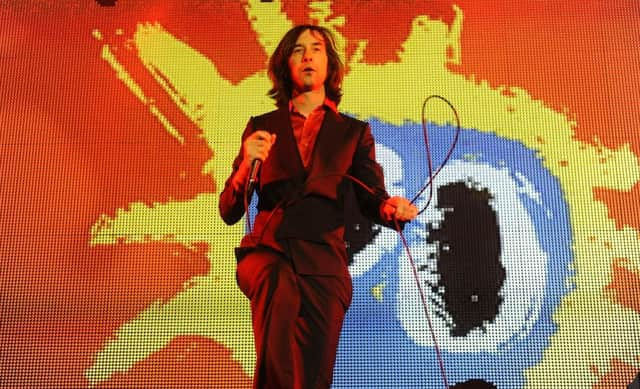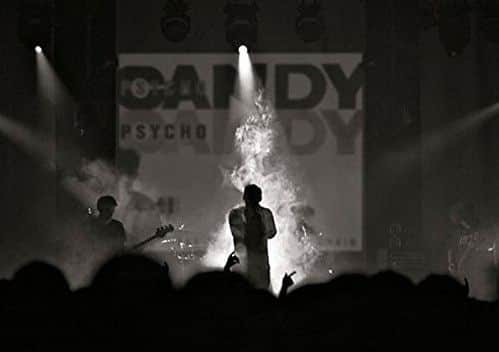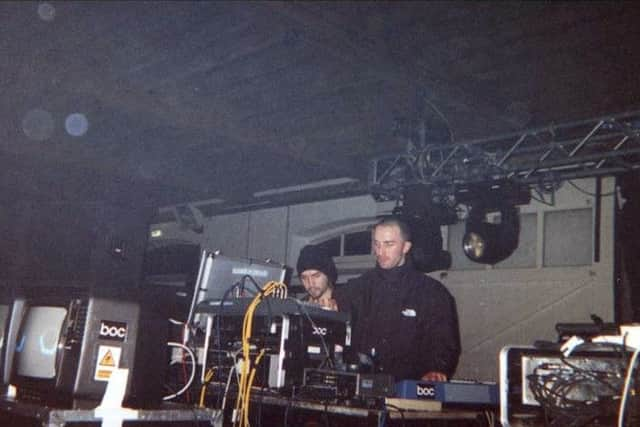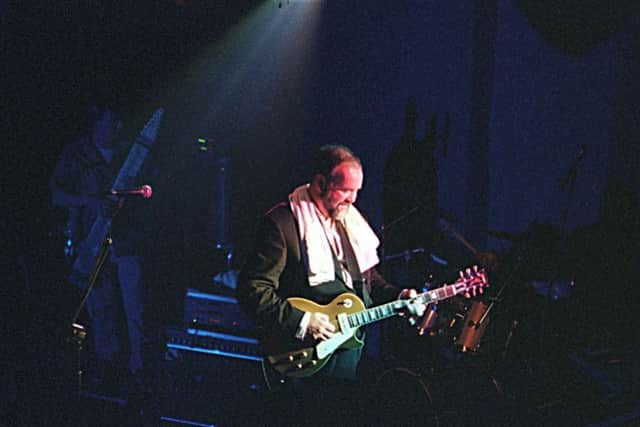Seven of the most influental Scottish albums of all time


THE JESUS AND MARY CHAIN - PSYCHOCANDY (1985)
The Jesus and Mary Chain continue to rank as one of the least likely musical success stories of the late 20th century. Two brothers, William and Jim Reid, who grew to loathe each other after sharing a bedroom as teenagers in East Kilbride, formed a band to stave off the boredom of living in a new town. Their initial gigs in Glasgow went down badly, and only an invitation to perform at a club night in London, via a friend by the name of Alan McGee, persuaded them to continue. The gig was, apparently, a shambles: barely 20 minutes long, each song drowned out in a wail of feedback from William’s guitar amps. But McGee loved it, and quickly arranged for them to record a single for his flegling label, Creation. The surprise success of Upside Down led to a major record deal, and Psychocandy followed. On the face of it, what the JAMC did was simple - taking three chord pop songs inspired by Phil Spector girl groups and attacking them with sheer sonic force. And yet, no-one had thought to try it before. Psychocandy’s influence encouraged everyone from My Bloody Valentine to Sonic Youth, and inspired countless imitators. Listen to just about any new band to emerge from Brooklyn in recent years and the legacy of the Reids’ bravado is plain to see.
COCTEAU TWINS - HEAVEN OR LAS VEGAS (1990)


Originally formed in Grangemouth in the wake of the late ‘70s punk explosion, the Cocteau Twins chose a more cerebral path after moving to London. Driven by the creative energies of guitarist and producer Robin Guthrie and vocalist Liz Fraser, they stepped up a gear when Simon Raymonde joined on bass. Their atmospheric, ethereal sound was grounded by repetitive bass lines and drum machine parts, which acted as a firm foundation for Guthrie’s spectral, often minimal guitar parts. But it was Fraser’s soprano vocals that set the group apart. Famously described as ‘the voice of God’ (much to Fraser’s alleged displeasure), she relied less on recognisable lyrics and more on the endless possibilites of her voice. Heaven or Las Vegas remains their most complete work, and was celebrated in an independent documentary, Beautiful Noise, released in 2014. The Cocteau Twins have been feted by everyone from Andre 3000 of OutKast to film director Peter Jackson. The band split in 1998 but their pull remains strong. Several promoters - including the influential Coachella festival in California - have reportedy made lucrative offers over their years for a reunion.
BOARDS OF CANADA - MUSIC HAS THE RIGHT TO CHILDREN (1998)
Advertisement
Hide AdAdvertisement
Hide AdMichael Sandison and Marcus Eoin, brothers and electronic music obsessives, had quietly released the results of their studio work for several years before their debut LP appeared in 1998. But none had made the impact of Music Has The Right To Children. Released on legendary label Warp, the album followed the innovative template they had set down on the acclaimed Twoism EP, and was taped at Hexagon Sun - the duo’s mysterious studio complex in the Pentland Hills outside of Edinburgh. The tracks on Music utilise vintage field recordings and feature intensive sound manipulation, leading critics to hail it as “a thing of wonder” and “cleverly referencing the esoteric side of ‘70s Test Card music in all its trippy glory.” Almost two decades later, Boards of Canada’s full-length debut, made of material that feels both nostalgic and fragile, remains a key electronic music touchstone. Influential online music magazine Pitchfork ranked it 35 in its Top 100 albums of the 1990s. While Boards of Canada continue to write and release music, they have not played a live show since 2001.
PRIMAL SCREAM - SCREAMADELICA (1991)


Every indicator suggested this album would flop. The dance craze that kicked off in the late 1980s was presumed to have peaked. Primal Scream were written off as a group of try-hard rockers, too in thrall to the sound of the ‘60s to be cutting edge. They had previously released all the best songs as singles, etc. But Screamadelica is one of those rare albums where everything clicks - from its striking artwork to the order of the songs. Bobby Gillespie’s gang from the southside of Glasgow succeeded in reinventing themselves as dance-rock titans at exactly the right time, winning the inaugural Mercury Music Prize in the process. It was named the best Scottish pop or rock album of all time by The Scotsman in 2003.
JOHN MARTYN - SOLID AIR (1974)
Solid Air was John Martyn’s sixth album, including two in collaboration with his then wife, Beverley. Aided by a concise backing unit, including long-standing partner Danny Thompson on double bass, the singer created a set distilling his past and pointing to the future. Stylistically, Over The Hill suggests earlier folk recordings, where Martyn’s reading of Skip James’s I’d Rather Be The Devil is a showcase for his trademark slurred vocals. May You Never has become the album’s best-known track, thanks to Eric Clapton’s cover, but it is on the title track where Martyn excels. A moving plea to the doomed singer and friend, Nick Drake, its open structure allowed space for a deeply poignant vocal, helping confirm Solid Air as Martyn’s finest album. A former pupil at Shawlands Academy in Glasgow, Martyn died in 2009 aged 60.
THE BETA BAND - THE THREE E.P.’s (1998)


Not many groups directly influenced both Oasis and Radiohead, but then there was always something unique about the Beta Band. Started by a group of friends who met at Edinburgh College of Art in the mid-1990s and soon relocated to London, their approach to making music combined elements of folk, hip-hop and dance music, creating a sound that had never been heard before and has never been succesfully replicated since. Their first three EPs - which included the anthemic Dry The Rain, still their best known song - were collected on a 1998 album and released to huge critical acclaim on both sides of the pond. A tour support slot with Radiohead and an unlikely reccomendation from Noel Gallagher followed. The group split in 2004. Vocalist Steve Mason continues to release acclaimed music as a solo artist, while keyboard player/producer John Maclean has reinvented himself as a film director - his debut feature, Slow West, was a critical smash.
AVERAGE WHITE BAND - AWB (1974)
No other funk bands which got together in early ‘70s Dundee can claim to have gone on and topped the American R&B album charts. The Average White Band - the name was a very deliberate joke - formed in 1972 with members from Dundee, Perth and Glasgow, all of whom had been around the block a few times, even by music industry standards. They were famously dropped by their record label following the release of their debut LP, and, left stranded in New York, secured an appointment with Atlantic MD and general industry titan Jerry Wexler. The resulting deal allowed them to record AWB, or the White Album, as it became known. Filled with riffing horns, tough rhythms and criss-crossed vocals, the band scored a major international hit single with the ebullient Pick Up The Pieces - which can still be heard on classic rock stations across North American to this day.